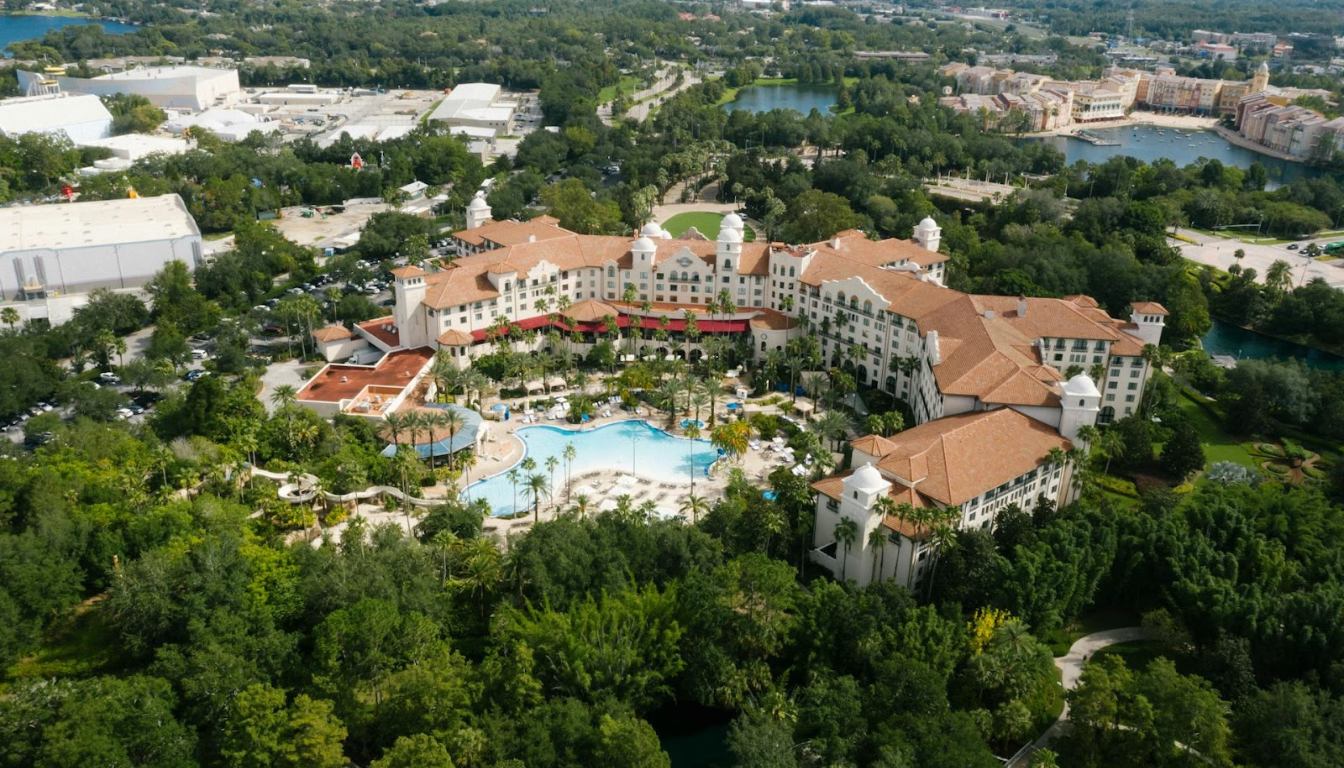How to Master Planning Corporate Retreat in 7 Simple Steps

Planning a corporate retreat? You’re in the right place. This guide on planning corporate retreat breaks down the entire process into 7 clear steps. From setting objectives to gathering feedback, we’ll help you create an impactful retreat. Let’s get started!
Key Takeaways
- Define clear objectives aligned with company goals to maximize retreat relevance and impact.
- Establish a realistic budget, itemizing costs and considering hidden expenses for effective financial management.
- Collect and analyze feedback post-retreat to improve future events and enhance participant satisfaction.
Define Clear Objectives for Your Corporate Retreat

Setting clear objectives is the foundation of planning a corporate retreat. Without them, your retreat may lose focus and become a series of disconnected activities. Establishing these goals from the start ensures every decision supports the retreat’s overarching aims.
Aligning retreat objectives with company growth and individual employee development sets the stage for success. This alignment guides informed decisions, ensuring every activity and session contributes to desired outcomes.
Next, we will explore how to align retreat goals with company objectives, identify key outcomes, and gather input from the leadership team while planning a company retreat to ensure a successful and impactful event.
Align with Company Objectives
Aligning the company retreat’s goals with overall company objectives maximizes its impact and relevance. This ensures the unforgettable company retreat fosters team building, enhances productivity, and reinforces company culture and values.
Clear conduct guidelines promote a respectful and collaborative atmosphere, essential for a positive retreat experience.
Identify Key Outcomes
Identifying specific outcomes is crucial for improving team dynamics and supporting strategic initiatives. Celebrating accomplishments by breaking down general goals into specific categories facilitates focused planning and ensures the retreat addresses the company’s most critical areas, moving forward.
Incorporating participant feedback can significantly enhance the quality and relevance of future retreats.
Gather Input from Leadership Team
Involving the leadership team and employees in the planning team increases employee engagement and investment. Even companies with dedicated event planners benefit from sharing responsibilities, ensuring diverse perspectives and ideas are considered.
Dividing tasks promotes ownership and accountability, contributing to a more successful retreat.
Set a Realistic Budget

Establishing a realistic event budget early can prevent future financial troubles. Ensure the budget covers expenses like:
- the event venue
- accommodations
- food
- transportation
- other fees
Consider seasonal pricing fluctuations when planning a corporate retreat.
A balanced budget approach suggests:
- Allocating around 25% for accommodation, transportation, food, and activities.
- Categorizing expenses to allow for better management and ensure all potential costs are considered.
- Communicating any costs team members need to budget for to avoid dilemmas later.
Next, we will discuss how to itemize costs, consider hidden costs and expenses, and allocate funds for impactful experiences to ensure a successful retreat.
Itemize Costs
Itemizing costs leads to better budget management, ensuring all potential expenses are accounted for. Break down the budget into categories like accommodation, transportation, food, and activities.
For smaller retreats, hiring a chef for meals can manage food expenses effectively. Communicate any costs that team members need to budget for, along with advanced notice of the retreat.
Consider Hidden Expenses
To manage hidden costs and expenses effectively:
- Account for hidden expenses like resort fees or service charges in the budget.
- Set a firm budget.
- Allocate portions of the budget for different expenses.
Planning for additional expenses ensures there are no financial surprises during the planned retreat.
Allocate Funds for Experiences
Focusing on impactful experiences rather than luxury accommodations can enhance team bonding. Allocate funds to kick things for team-building activities and local cultural events to create unforgettable experiences and strengthen team dynamics.
This approach ensures the retreat is both meaningful and budget-friendly.
Choose the Perfect Venue

Choosing the perfect team corporate retreat location or venue is critical in the retreat planning process. The right venue can enhance the overall experience with appealing aesthetics, quality customer service, and necessary amenities. Look for venues that offer meeting space, meals, and overnight accommodations in a package to simplify logistics. Booking in the off-season can save money on venue rental and accommodations.
When evaluating locations, consider:
- Facilities for work and recreation
- Accommodation
- Food options
- Ease of access
Assess Venue Amenities
Ensure the office venue provides modern amenities like audiovisual equipment, comfortable seating, Wi-Fi, meeting rooms, and a conference room for effective work sessions. The venue should also offer comfortable accommodations and avoid mundane corporate environments to encourage creativity and engagement.
Book in Advance
Booking the venue well in advance prevents last-minute issues and ensures availability. Choosing a venue that aligns with your retreat goals is crucial for maximizing effectiveness.
Evaluating different locations allows for flexibility, balancing exotic experiences with convenience.
Plan Transportation and Lodging

Careful planning of transportation and lodging ensures a smooth retreat experience, with special considerations for optimal locations that should be easily accessible, allowing for hassle-free travel. Choosing a location with ample parking is crucial for attendees who drive.
Coordinating group travel offers several benefits and considerations:
- Simplifies logistics and ensures everyone arrives together, fostering early team bonding.
- Using ride-sharing options can significantly reduce costs and enhance the retreat experience.
- Selecting convenient and comfortable lodging options is also important.
Next, we will discuss how to coordinate group travel, select suitable lodging, and provide clear travel instructions to ensure a successful retreat.
Coordinate Group Travel
Arranging group transportation simplifies logistics and ensures everyone arrives together. Traveling as a group fosters early team bonding and encourages collaboration.
Using ride-sharing options for group transport can significantly reduce costs and enhance the retreat experience.
Select Suitable Lodging
Considerations for lodging and venue selection:
- Lodging should be close to the venue for attendee convenience.
- Hotels and resorts are preferred as company size increases.
- Selecting venues that include meals and meeting spaces simplifies logistics for overnight stays.
Welcome baskets for guests can include planners, retreat or offsite agendas, water bottles, company-branded swag, and self-care items to enhance their experience.
Provide Clear Travel Instructions
Clear travel instructions are crucial to minimize confusion and ensure a smooth arrival. Early booking of the venue ensures availability and accommodates specific participant requests.
Clearly outlining local transportation options for attendees responsible for their own travel is essential.
Design an Engaging Agenda

Creating a balanced and engaging agenda is key to a successful retreat. Corporate retreats aim to strengthen relationships, boost productivity, and refresh workplace and team morale. A good agenda includes various business sessions and activities that balance productivity with downtime and organic team building. Scheduling downtime allows employees to relax and rejuvenate while you plan a company retreat.
To maintain participant engagement and energy levels:
- Mix structured work sessions with leisure activities.
- Integrate team-building activities to foster camaraderie and strengthen team dynamics.
- Build flexibility into the schedule to allow for adjustments based on participant energy levels and engagement.
Mix Work and Play
Balancing structured work sessions with leisure activities maintains participant engagement and energy levels. Incorporating diverse activities that appeal to different preferences can enhance engagement and enjoyment.
Providing participants with free time allows them to recharge and facilitates informal networking.
Schedule Team-Building Activities
Team-building activities offer opportunities for bonding and relationship building. Activities can include icebreakers, scavenger hunts, hiking, yoga, board games, and physical activities to build camaraderie for teams.
Ensure team-building activities reflect local culture and are inclusive for all participants.
Allow for Flexibility
Building flexibility into the schedule allows for adjustments based on participant energy levels and engagement. Collecting feedback during the retreat helps understand their preferences and energy levels.
Analyzing feedback to identify what worked well and making the most important piece of necessary adjustments for future retreats is crucial.
Communicate Plans and Expectations Early
Effective early communication involves:
- Setting expectations and alleviating pre-retreat anxiety.
- Sharing plans and contributions in advance to ensure everyone is on the same page.
- Clearly communicating financial expectations early to prevent dilemmas later.
- Providing clear booking guidelines and expense policies for attendees managing their own travel.
Key communication practices for a successful retreat include:
- Sending save-the-dates well in advance to allow employees to manage their schedules and prepare for the retreat.
- Sharing a comprehensive itinerary to help participants understand the retreat’s structure and expectations.
- Clearly communicating expected behaviors to ensure a positive experience for everyone involved.
Send Save-the-Dates
Alerting employees about the retreat well in advance allows them to manage their schedules and make necessary arrangements. Sending save-the-dates 3 to 6 months before the event maximizes participation and reduces scheduling conflicts.
This advanced notice ensures all team members can plan ahead, contributing to a smooth and well-attended retreat for the entire team.
Provide Detailed Itineraries
Sharing a comprehensive itinerary helps participants understand the retreat’s structure and expectations. Itineraries should include information on activities, timelines, and necessary items for participants.
Distributing an itinerary helps participants be better prepared, ensuring the retreat runs smoothly.
Set Behavioral Expectations
Clearly communicating expected behaviors ensures a positive experience for not everyone involved. Setting clear communication and expectations before the retreat helps participants understand their roles and responsibilities.
Providing detailed itineraries outlining the retreat schedule, activities, and what to bring will minimize confusion and set the stage for a successful retreat.
Collect Feedback and Reflect
Gathering feedback after the retreat is crucial to:
- Assess its effectiveness
- Understand what was beneficial for participants
- Understand employees’ enjoyment and gather insights for future planning
- Ensure continuous improvement of retreat plans
- Enhance overall effectiveness and participant satisfaction
Conducting post-retreat surveys is an effective way to gather honest feedback. Creating an anonymous survey increases the chances of receiving constructive feedback from participants. This feedback is invaluable for identifying what worked well and what needs improvement for future retreats.
Analyzing the feedback from surveys helps in understanding both the successes and areas needing improvement. Reviewing survey results can reveal trends and common themes in participant responses regarding engagement levels. From this analysis, actionable insights can be derived to improve team-building activities and other aspects of the retreat based on preferences identified in the feedback.
Conduct Post-Retreat Surveys
The purpose of sending out a post-retreat survey is to gather honest feedback about the retreat. A recommended method for collecting feedback after the retreat is to create an anonymous post-retreat survey.
Anonymous surveys enhance the chance of receiving honest and constructive feedback from retreat participants.
Analyze Feedback
Referring back to the survey data can greatly assist in planning future retreats by highlighting what aspects were most effective. It’s crucial to review survey results after the retreat to understand both successes and areas needing improvement.
Analyzing feedback can reveal trends, such as common themes in participant responses regarding engagement levels.
Implement Changes
Implementing changes based on feedback can lead to more effective and engaging future retreats. Continuous improvement of retreat plans enhances overall effectiveness and participant satisfaction.
Leadership should consider concerns and suggestions from participants to ensure future retreats are even more successful and to generate new ideas.
Summary
Planning a successful corporate retreat requires careful consideration of objectives, budget, venue, transportation, lodging, agenda, and communication. By following these steps, you can create a retreat that strengthens relationships, boosts productivity, and refreshes workplace morale. Remember, continuous improvement based on feedback ensures each retreat is better than the last, ultimately fostering a strong and cohesive team. For those looking to elevate the experience, many companies now turn to dedicated retreat planning platforms like Offsite that make organizing impactful, memorable retreats not only easier but more effective.
FAQs
- Why is defining clear objectives important for a corporate retreat?
Defining clear objectives is crucial because it aligns all planning and activities with the overall goals, ultimately enhancing the retreat's effectiveness and outcomes. This focus fosters a productive environment that drives meaningful engagement and results.
- How can I ensure my retreat aligns with company objectives?
To ensure your retreat aligns with company objectives, clearly define the retreat goals to reflect those objectives, fostering engagement and maximizing the retreat's impact. This strategic alignment will enhance outcomes and support your organizational mission.
- What should be included in a retreat budget?
A retreat budget should include expenses for the venue, accommodations, food, transportation, and any event fees. Ensuring all these elements are accounted for will help manage costs effectively.
- Why is early communication important in retreat planning?
Early communication is essential in retreat planning as it sets clear expectations, reduces pre-retreat anxiety, and ensures all participants are aligned, leading to a more effective and successful event.
You may also like
Unique spaces for your next offsite
Find distinctive venues for your upcoming corporate retreat.
Stay Updated with Our Insights
Get exclusive content and valuable updates directly to you.







